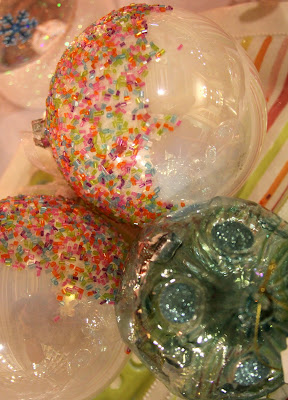
Since all those festive commercials seem to be in full force already, I’ve decided to post my annual holiday tips early, too. My hope is that the tips that are part of Creating Holiday Magic for Kids with Special Needs help make your celebrations a bit more joyful, no matter what traditions you honor. Feel free to share these tips, but please credit JudyWinter.com/2011. All rights reserved.
____________________________________________
Creating Holiday Magic for Kids with Special Needs 2011:
-Interact with family members with special needs, and encourage others to do the same. If the child uses a wheelchair, kneel to eye level and address the child directly. Allow other kids in the family to buddy up and assist the child with special needs in hanging ornaments, frosting cookies, setting the table, or passing out presents. Help that child participate whenever possible, while teaching other kids in the family valuable, lasting life lessons.
-Practice forgiveness whenever possible. Most family members don’t intentionally set out to exclude children with special needs. They often require education, support and positive examples to bring them up to speed. By focusing on creative solutions, families can help realize holiday magic for kids with special needs, too— and that’s in keeping with the spirit of the season.
-Buy age/skill-level appropriate gifts for the child with special needs. Regardless of how well intentioned, inappropriate gift selection for children with special needs hurts. When in doubt, ask parents for gift ideas, or obtain a copy of the child’s holiday wish list. Reserve baby toys (and baby talk) for babies! Key Note: Toys ‘r Us offers an annual Toy Guide for Differently-Abled Kids, ‘a toy selection guide ‘for parents and friends of children with disabilities,’ to ensure the holiday toy wishes of kids with special needs come true, too. The 2011 guide with Eva Longoria on the cover can be downloaded here: Toys R Us.
-Communicate! Don’t assume others can read your mind. They can’t. Instead, arrange family meetings to discuss your child’s needs and how to best address them. Provide needed training and brainstorm ways to include the child with special needs in family activities. For example, if a he/she uses a wheelchair, address accessibility issues and plan activities in locations that don’t involve stairs. Speak up now to help prevent bigger misunderstandings and hurt feelings later on. Family members, you can reach out and initiate problem solving, too. Our children are always worth our best efforts, and your support to these families is priceless.
-Redefine your expectations. Throw all those visions of a perfect Hallmark family holiday right out the garland-draped window! Instead, ask what memories you want to create for all of your children. Having a child with special needs does not mean you must forgo memorable and fun holiday moments and traditions. Think creatively! It’s worth the effort.
-Inclusion is the name of the game! Kids with special needs are children first, with big dreams and long holiday wish lists, just like other kids. Whenever possible, include the child in holiday festivities and activities like tree trimming, baking cookies, shopping for gifts, and attending church services (use the cry room if needed). Include that child in family holiday photos and videos, too.
-Address food allergies and noise/touch sensitivities and make allowances for them. The seasonal bounty this time of year can result in overload for many children, especially those with sensory, auditory and food issues. Kids with food allergies may not be able to eat all the traditional goodies most of us eagerly gobble up. Discuss alternative choices and inform family members about any life-threatening food allergies so they don’t offer the offending food to the child.
Wishing you the happiest of Holidays!
Photo Judy Winter 2011
